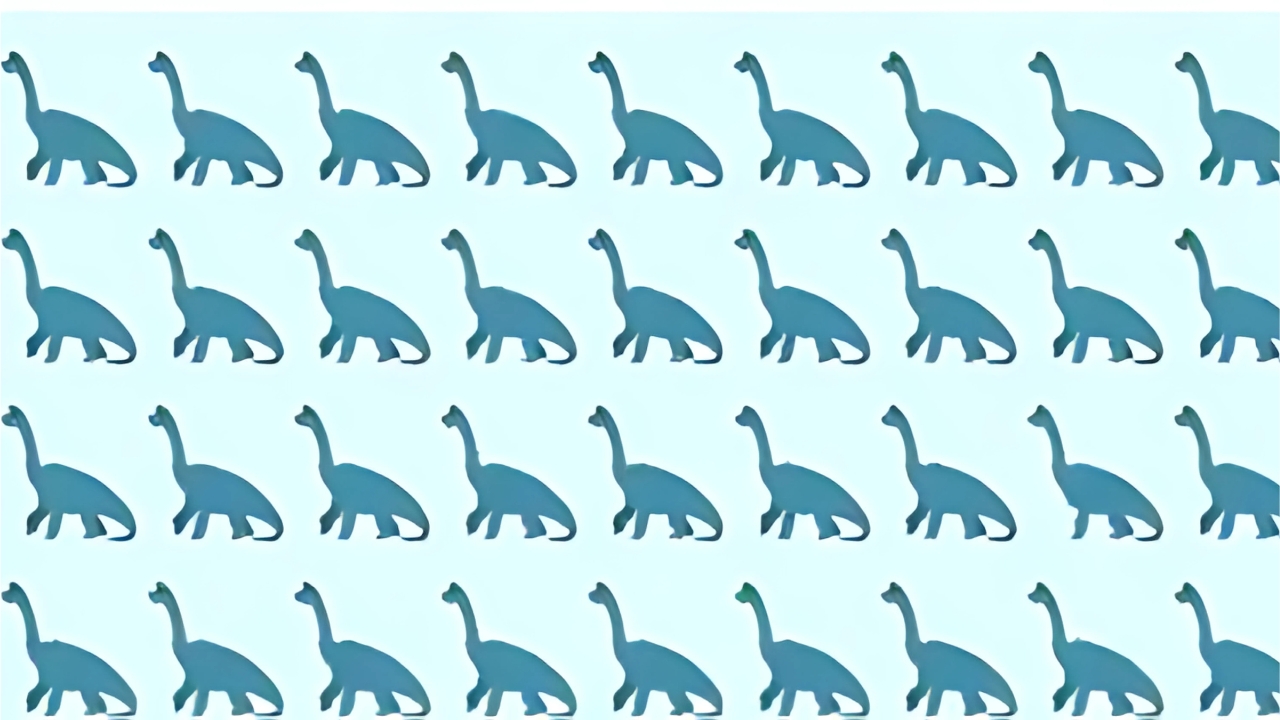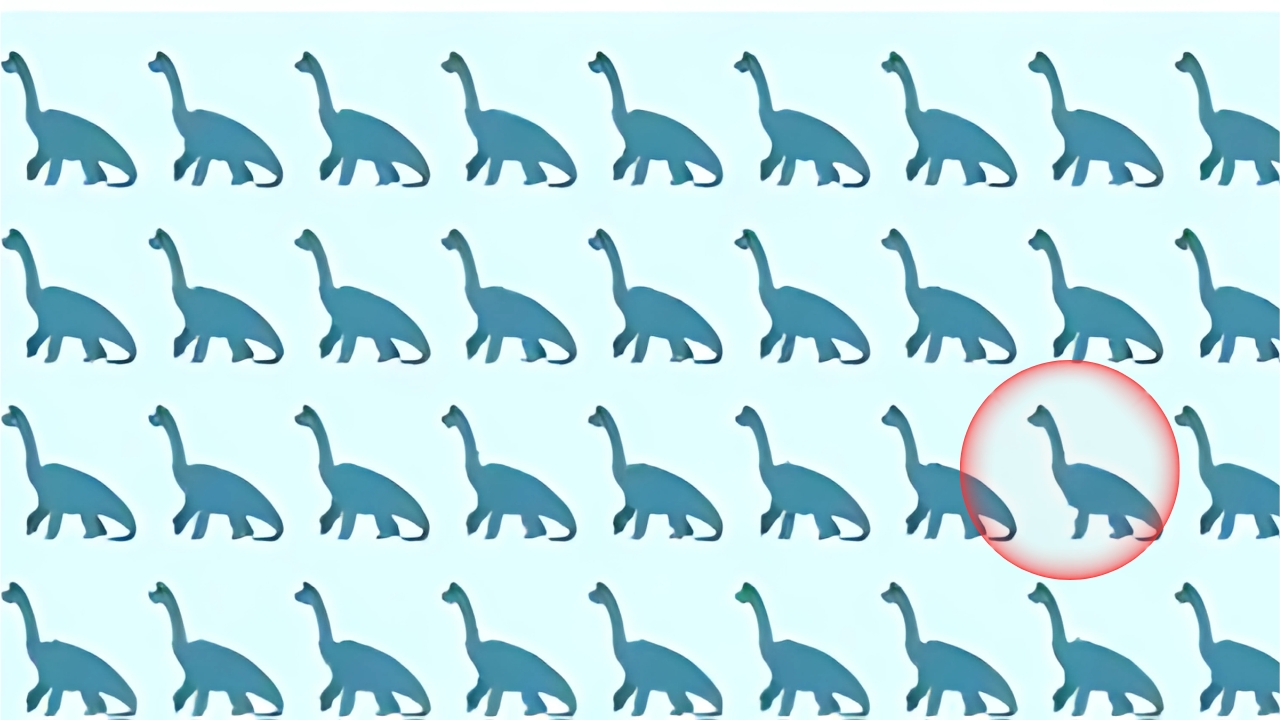Optical illusions continue to captivate audiences worldwide, with dinosaur -themed visual puzzles becoming increasingly popular in 2025.
These mind-bending challenges not only entertain but also provide valuable insights into how our brains process visual information. Recent research reveals that illusions like these mess with the brain’s visual processing system, making viewers see things that aren’t there in reality.
Understanding the Science Behind Visual Perception
How Our Brain Processes Visual Information

The human visual system is remarkably complex, involving intricate interactions between our eyes and brain. Our mind is the final arbiter of truth, which explains why optical illusions can so effectively deceive us.
When we encounter a visual puzzle, our brain attempts to make sense of the information by applying learned patterns and expectations.
Most optical illusions are the result of 1) incongruent design elements at opposite ends of parallel lines, 2) influence of background patterns on the overall design, 3) adjustment of our perception at the boundaries of areas of high contrast, 4) afterimages resulting from eye movements or from kinetic displays, or 5) inability to interpret the spatial structure of an object from the context provided by the picture.
The Role of Context in Visual Perception
Context plays a crucial role in how we interpret visual information. Optical illusions occur because our brain is trying to interpret what we see and make sense of the world around us.
This evolutionary adaptation, while generally helpful for survival, can be exploited to create fascinating visual puzzles that challenge our perception.
The Rise of Dinosaur-Themed Optical Illusions
The Famous T-Rex Hollow-Face Illusion
One of the most popular dinosaur illusions gaining traction in 2025 is the hollow-face T-Rex illusion.
This video is based on the famous dragon illusion which was inspired by Jerry Andrus, demonstrating how classic illusion principles can be adapted for modern audiences. The dinosaur appears to follow viewers around the room, creating an unsettling yet fascinating effect.
Leave it standing on a table and when you move around, the T-Rex’s head seems to follow you around the room (just stare at the T-Rex’s eye and you will see the illusion).
This effect works because our brain interprets the concave surface as convex, creating the illusion of movement and attention.
DIY Dinosaur Illusions: A Growing Trend
The accessibility of printable dinosaur illusions has contributed to their popularity. This crazy optical illusion is great fun for kids! Turn the colorful dinosaur around and it’s head turns to follow up around the room!
These DIY projects combine entertainment with education, helping children understand visual perception principles while having fun.
Latest Research and Developments in 2025
Current Scientific Understanding
Recent developments in optical illusion research have provided deeper insights into visual perception.
Researchers unveiled the Scintillating Starburst in a 2021 study published in the journal i-Perception, demonstrating how new illusions continue to be discovered and studied.
The scientific community actively celebrates these discoveries through competitions.
The Best Illusion of the YearSM Contest is a celebration of illusions and perception, created by the ingenuity of the world’s premier illusion creators, with submissions for 2025 now open until September 15.
Technological Applications
Modern technology has enhanced our ability to create and study optical illusions. Optical illusions are not new. They have been present in various cultures and have fascinated and puzzled people for centuries.
These illusions often become viral in social networks because the human brain observes interesting and intriguing images.
Educational Benefits of Optical Illusions
Cognitive Development and Learning
Optical illusions serve as powerful educational tools, particularly for children.
They demonstrate that perception refers to the interpretation of what we take in through our eyes, helping students understand the difference between sensation and perception.
Applications in Various Fields
The study of optical illusions extends beyond entertainment. The study of illusions is critical to how we understand sensory perception, and many ophthalmic and neurological diseases.
Medical professionals use illusion research to better understand visual processing disorders and develop treatment strategies.
Historical Significance
The use of optical illusions in design dates back centuries.
The ancient Greeks used a technique known as entasis which incorporates a slight convexity in the columns of the Parthenon to compensate for the illusion of concavity created by parallel lines, showing how understanding visual perception has practical architectural applications.
Creating Your Own Dinosaur Illusions
Materials and Techniques
Creating effective dinosaur illusions requires understanding basic principles of visual perception. To create this T-Rex illusion, all you need to do is simply print any of the designs, cut it out and finally stick it together.
The key is ensuring proper proportions and understanding how lighting affects the illusion’s effectiveness.
Digital Enhancement and Modern Tools
Modern software tools can enhance traditional illusion-making techniques. For example, use motion blur edit from Luminar Neo for your image to create dynamic visual effects that complement traditional optical illusions.
The Psychology Behind Dinosaur Appeal
Why Dinosaurs Fascinate Us
Dinosaurs hold a special place in popular culture, making them ideal subjects for optical illusions. In this mega dinosaur edition of Whizz Pop Bang, we’re looking at some of the most awesome creatures ever to have set foot on this planet.
This fascination, combined with the mystery of optical illusions, creates compelling visual experiences.
Social Media and Viral Potential
The combination of dinosaurs and optical illusions creates highly shareable content.
Little wonder then, that this ingenious and entertaining YouTube video has already been watched by over 2.3 million people in less than 5 days, demonstrating the viral potential of well-executed visual puzzles.
Future Directions in Optical Illusion Research
As we advance through 2025, researchers continue exploring new frontiers in visual perception. Illusions are perceptual experiences that do not match the physical reality.
How we see the outside world―our perception―is generated indirectly by brain mechanisms, and so all perception is illusory to some extent.
The integration of virtual reality, augmented reality, and artificial intelligence promises to create even more sophisticated and interactive optical illusions, particularly those featuring beloved subjects like dinosaurs.
Optical illusion Answer

Frequently Asked Questions
Q: How quickly can most people spot differences in optical illusion puzzles? A: Most people can identify differences in optical illusions within 10-30 seconds, though this varies based on complexity and individual visual processing abilities.
Q: Are optical illusions safe for children to view? A: Yes, optical illusions are generally safe and educational for children, helping them understand how their brains process visual information while providing entertainment.
Q: Can optical illusions improve cognitive function? A: Regular exposure to optical illusions may help enhance visual processing skills and attention to detail, though more research is needed to confirm long-term cognitive benefits.